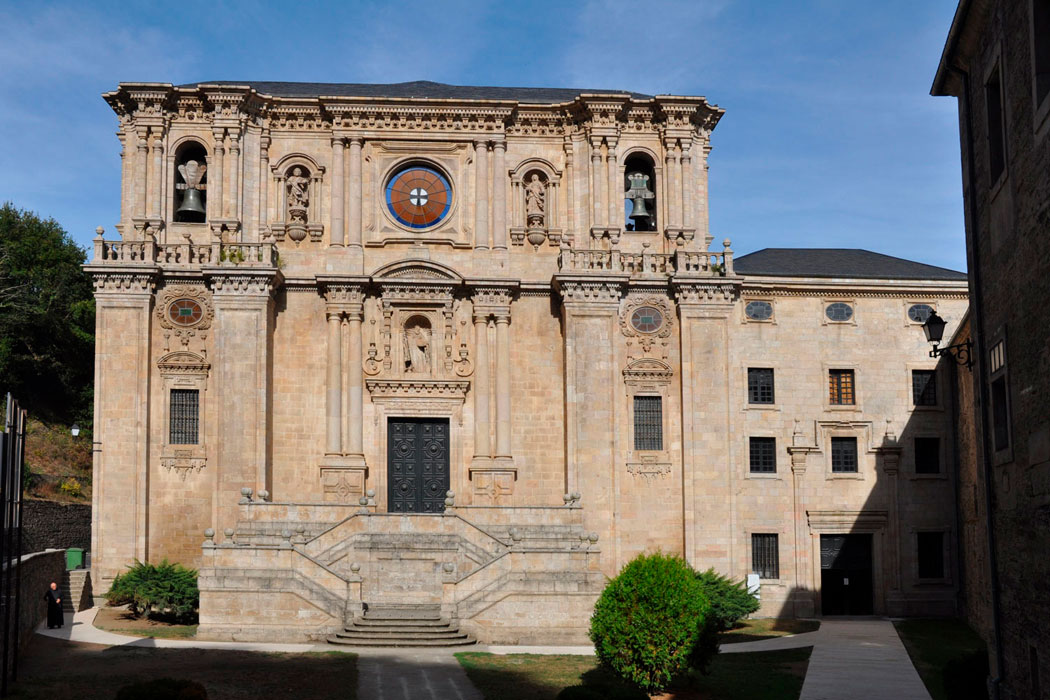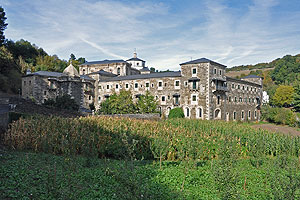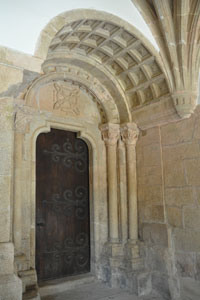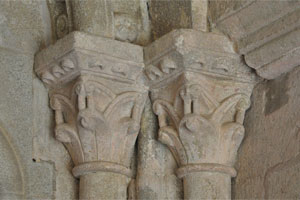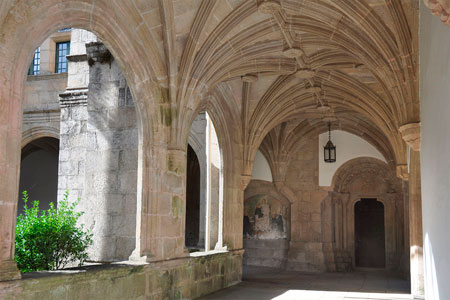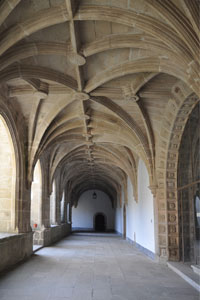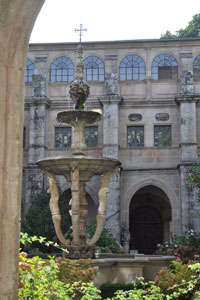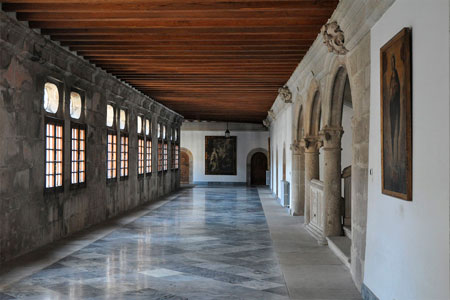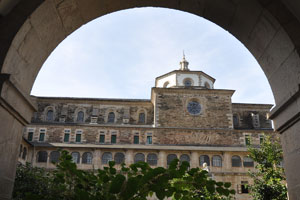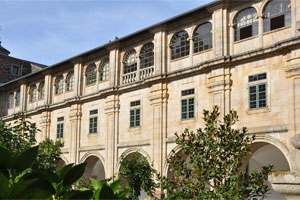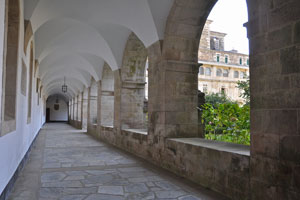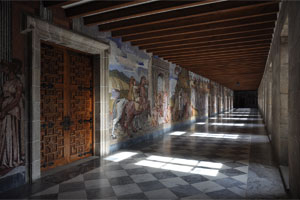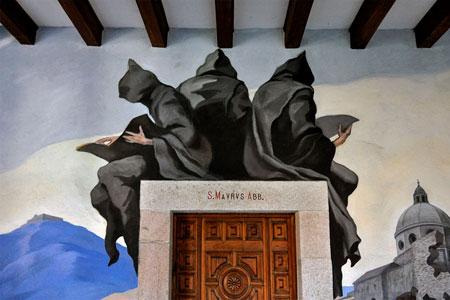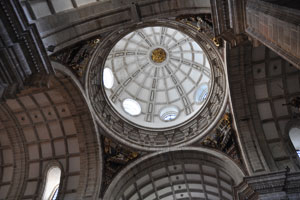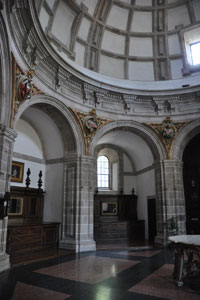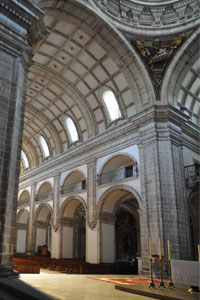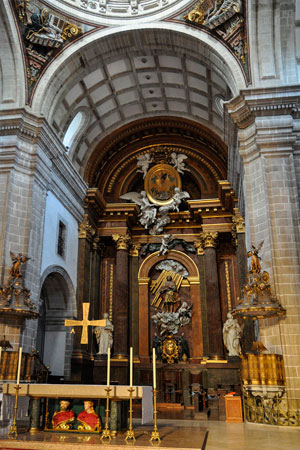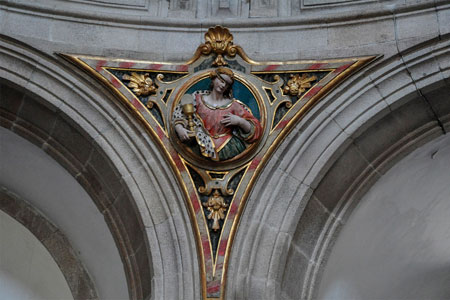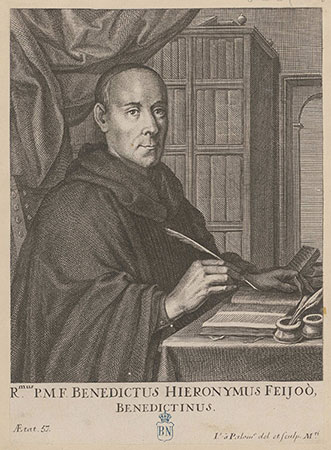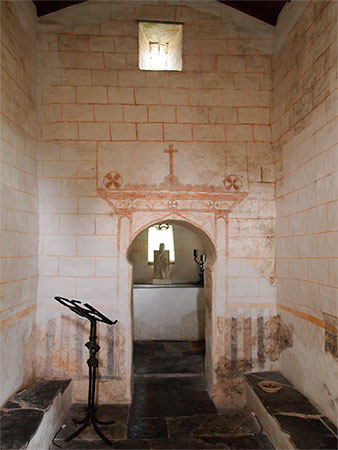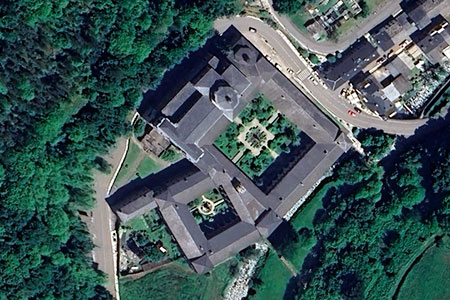Monastery of San Xulián de Samos
Mosteiro de San Xulián de Samos / San Julián de Samos / Sámanos
(Samos, Lugo)
San Xulián de Samos is an ancient monastery whose foundation is attributed to Saint Martin of Dumio, bishop of Braga in the 6th century. A now-lost inscription dated its foundation to the mid-7th century, during the time of Bishop Ermefredo (c. 653–c. 656), likely referring to the restoration or reform of an earlier building. Around the year 714, the monastery became one of the victims of the Saracen occupation of the region and was subsequently abandoned.
King Fruela I of Asturias († 768) granted the site of Samos to Abbot Argerico and his sister Sarra, refugees from an unknown location in the Iberian Peninsula, with the intention of restoring the monastery. This donation was confirmed in 811 by King Alfonso II. At that time, the monastery may have functioned as a double monastery. In 785, Samos participated in the founding of the monastery of San Esteban de Calvor (Sarria, Lugo). In the mid-9th century, King Ramiro I donated the monastery to Abbot and Bishop Fatalis, a grant ratified by Ordoño I in 853. Despite successive donations and documented confirmations, by 922, the monastery had lost much of its vitality: observance had declined, and part of the community had dispersed. That same year, King Ordoño II (c. 872–924) entrusted Abbot Santa María de Penamaior with restoring the monastery, accompanied by an economic endowment.
Over time, the monastic community flourished. The monastery received numerous donations and acquired rights, which were officially recognized in a document signed in 1175 by Pope Alexander III. In the 12th century, already under the Benedictine rule, Samos enjoyed a long period of prosperity despite conflicts with episcopal authority. In 1491, it underwent reform, and in 1505 it was incorporated into the Benedictine Congregation of Valladolid. In 1517, as part of those reforms, the monastery of Santa María de Ferreira de Pallares (Guntín, Lugo) came under its authority. In the 1530s, a devastating fire destroyed much of the monastery, necessitating the reconstruction of its buildings.
In the second half of the 16th century, a new Gothic cloister was built to replace the earlier Romanesque one. Construction work continued over the following decades, including the building of a second cloister, begun at the end of the 17th century. One of the most notable figures associated with the monastery was the writer and monk Benito Feijoo. Compared to other monasteries, Samos was not severely affected by the Peninsular War, although it did serve as a military hospital.
The monastery was temporarily expropriated during the “Liberal Triennium” and permanently in 1835–1836. In 1848, its buildings were transferred to municipal ownership, then to the state, and finally to the Church, allowing for the return of a Benedictine community in 1880. This community later contributed to the recovery of other Galician monasteries. In 1951, the monastery suffered another fire, causing significant damage and the loss of part of its archives and library. Since then, efforts have been made to restore the monastic complex.
Among the most notable structures are the chapel of San Salvador, or del Ciprés, a pre-Romanesque building linked to the monastery’s earliest period. The other buildings date from the 17th and 18th centuries, as well as the restorations following the last fire. The monastery features two cloisters: one from the 16th century and the other from the 17th century.
- ARIAS CUENLLAS, Maximino (1992). Historia del monasterio de San Julián de Samos. Samos: Monasterio de Samos
- FERNÁNDEZ CASTIÑEIRAS, Enrique; i altres; dir. (2007). Arte Benedictino en los caminos de Santiago. Opus Monasticorum II. Xunta de Galicia
- FOLGAR DE LA CALLE, M. Carmen; dir. (2007). San Xulián de Samos Opus Monasticorum III. Xunta de Galicia
- FREIRE CAMANIEL, José (1998). El monacato gallego en la alta edad media, vol. II. La Corunya: Fund. Pedro Barrié de la Maza
- LÓPEZ SALAS, Estefanía (2016). Descubriendo un paisaje histórico el espacio cercado del monasterio de San Julián de Samos en el siglo XIX. Revista de História da Arte, núm. 5
- LÓPEZ SALAS, Estefanía (2017). La reforma de la abadía de Samos entre 1491 y 1637: desvelando la lógica de los cambios arquitectónicos. Imago temporis: Medium Aevum, núm. 11
- PÉREZ GONZÁLEZ, José María; dir. (2018). Enciclopedia del Románico en Galicia. Lugo. Aguilar de Campoo: Fundación Santa María la Real
- PÉREZ RODRÍGUEZ, Francisco Javier (2008). Mosteiros de Galicia na Idade Media. Ourense: Deputación Provincial de Ourense
- SÁ BRAVO, Hipólito de (1972). El monacato en Galicia. Vol. 1. La Corunya: Librigal
- SANDOVAL, Prudencio de (1601). Primera parte de las fundaciones de los monesterios del glorioso Padre San Benito. Madrid: L. Sánchez
- ZARAGOZA PASCULA, Ernesto (1996). Abadologio del monasterio de San Julián de Samos (siglos VIII-XX). Estudios Mindonienses, núm. 12. Diócesis Mondoñedo-Ferrol
